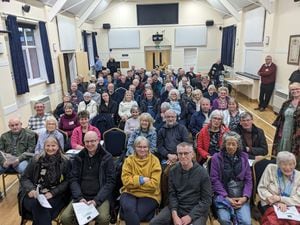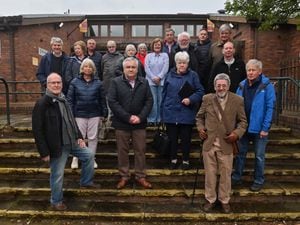£23 million overhaul of Shropshire council computer systems to be approved
A £23 million overhaul of Shropshire Council's computer systems is hoped for to make the authority more modern, efficient and commercially competitive.

It should also save money in the long run, the business case for the "transformation" of council IT systems and digital communications says.
The case, drawn up by Shropshire Council's chief executive Clive Wright and head of development Michele Leith, estimates £11 million in savings for the authority, while joining up what are currently multiple different computer systems for different departments.
An outline case for what is being called the ICT Digital Transformational Programme was approved in July last year, and has now been developed into a full business caseI set to be rubber stamped at full meeting of Shropshire Council at Shirehall on Thursday.
The document says the strategy will "transform IT systems, re-shape services and back-office functions, reducing costs, removing duplication, improving efficiency and enabling more effective service delivery across a rural geography."
It also says the programme is "closely linked" to a drive to make the council more able to offer commercially competitive services that could generate much-needed income for Shropshire Council in the future.
Shropshire Council has not invested in its IT infrastructure since it became a unitary authority in 2009.
The document says: "All councils, with their wide range of services, are facing the challenge of keeping pace with the advancement of technology and communication methods.
"New digital technologies such as mobile devices and apps, together with scalable computing power, are transforming the way organisations such as Shropshire Council interacts with its customers.
"At the same time as this technological and communication shift is taking place, the harsh financial climate and austerity measures mean that there is increasing pressure to provide essential services at a reduced cost.
"Many of the existing IT systems work entirely independently. This is a more expensive way to run the variety of systems needed across the organisation as they have different maintenance requirements, individual license needs and most problematically, the different systems do not naturally work together.
"As the systems work independently, clunky and inefficient solutions have been found to transfer data or information between the various applications."
Examples including having to download files from one system and then upload them onto another, or even get whole new pieces of software to link two others, just to share information between departments.
But the plan is not just about helping council staff do their jobs, it says.
"The customer view is that the council does not work as a coherent, joined-up organisation and this often makes it complicated for customers to deal with the council," it says.
"There is no single view of the customer. An individual, who contacts Shropshire Council for different services, is treated as a different individual rather than one customer.
"The council needs to foster an aggregated and comprehensive set of known data which form a single view of the customer and their service usage," it adds.





